|
Introduction:
2024 has brought big changes for Norco. They’ve revamped much of their line-up to entice buyers after a dismal couple of years of the post-COVID slowdown. While some brands are cutting spending and trying to keep their heads above water, Norco has taken a bold approach by developing a whole bunch of new bike models. Included in this wholesale, ground up revision is the Range VLT. The engineering team at Norco is investing heavily in high-pivot suspension designs and this newest big-hitting e-bike is evidence of that. Going with a high-pivot idler pulley could be argued as a risky move for a full-power e-bike, as the extra force on the drivetrain should accelerate wear. We’re here to see if their investment will pay off. 2024 Norco Range VLT C1 Highlights ● Carbon front triangle/aluminum stays ● Dedicated mixed wheels- 27.5” rear/29” front ● 170mm (6.7 inches) of rear wheel travel //180mm (7 inches) fork travel ● Norco’s VPS-HP suspension design ● 63-degree head angle ● 76.50 to 77.50 degree-effective seat tube angle. This changes per size. This size 3 has a 77-degree effective seat tube angle. ● No geometry adjustments ● Internal cable routing ● Boost hub spacing ● The static rear centre on each size is different, ranging from 428mm on the S1 up to 444mm on the S5, but these numbers will grow under sag. ● 750Wh battery ● 85Nm Bosch Performance CX Line motor ● Customizable power delivery through the Bosch Flow App ● Sizes: S1 through S5 ● 57.6lbs/26.13kg (S3, no pedals) ● MSRP: $8999.00 Strengths ● The entire Bosch ecosystem is stellar ● Upright seated climbing position ● Superb descender, as long as the trails are fast ● Small bump compliance (high pivot voodoo) Weaknesses ● Tall, heavy bike. A handful on slow, tech trails ● Questionable component selection ● No 29” rear wheel option ● Awkward SRAM AXS shifter pod 2024 Range VLT C1 Norco’s engineers and product managers set out to revamp the newest Range VLT for the 2024 model year. Outward appearances may hint that it’s a refined version of the previous model. However, upon further inspection, this new Range is a complete redesign from the ground up. The previous generation was a good bike, but it had some flaws that kept it from being a great bike. The previous generation Range VLT was a little unrefined, quirky, while not the most reliable. At the heart of the 2024 Range is a different motor and battery. They’ve ditched Shimano in favour of the venerable Bosch Performance CX Line. This system is well-engineered and best of all, wireless. Gone are the cables that tended to hook on things and get ripped out. The result is a clean-looking cockpit with minimal clutter. Bosch is well known for providing a very sensical and smooth motor, which is probably the main reason for the change from Shimano. Continuing with a trend seen in other Norco models lately, they’ve gone with a high pivot suspension design with this, their flagship Enduro e-bike. The Range is offering a newly designed frame and a new motor, and they set out to improve the suspension kinematics as well. According to Norco, by going with a high pivot, they say they can better tune the axle path. Senior Product Manager, Paul Burnett states, “The Range VLT is supposed to be ridden in steep, rough, and challenging terrain where having a more rearward axle path helps to maintain rider confidence and control.” We’re not sure if this is true or just marketing mumbo-jumbo, but we’re here to find out. Size-specific stays keep the relatively short rear centre manageable, in theory. Also gone are the dual 29” wheels in favour of a dedicated mixed-wheel setup. Norco claims they have done extensive testing with a 27.5" rear wheel to provide more control and maneuverability. Whether or not those claims speak to the bike’s trail manners is yet to be seen. 2024 Range VLT Models This is Norco’s flagship C1 build, featuring a carbon front triangle and aluminum stays. There is also a C2 with a more modest component spec and an aluminum version that offers even more affordability. All models each feature the same Bosch Performance Line CX motor with 85nm of torque combined with a 750wh battery. The battery is upgradeable if you desire extra range, but there is also a range extender available. This C1 model comes in any color as long as it’s purple, which seemed to draw opinions from onlookers. People either loved it or hated it. While we don’t judge a bike by it’s color, purple wouldn’t be our first choice. The Numbers Here are a few key takeaways:
We set out to test this bike in the most varied trail types we could ride. We rode the 2024 Range VLT over three months in North Vancouver, Squamish, and Kamloops, British Columbia. We also used it to compete in The Mega Volt - an e-bike-specific event held in Naramata, British Columbia. The combination of these areas offers the perfect mix of tight, technical, and slow singletrack, along with high-speed downhill trails and steep climbs. While the coastal region is generally wet and technical, the interior region of British Columbia is semi-arid, loose and super fast. We sessioned double-black diamond rated trails as if we were riding a downhill race bike. While conversely, we took the big Norco on cross-country type trails to test its’ versatility. The Range was put through the wringer, raced, ridden hard, and put away wet. Literally. Trail conditions were a mix of everything you could have, which is a perfect way to round out the testing period. Bike Set-up Norco’s Ride Align is a very useful tool to get you in the ballpark of setting up your bike. Their newest version is pretty slick and vastly improved over last year’s. Our first ride was before the new Range was released on Norco’s website, so we had to set the bike up the old-fashioned way. Turns out, our educated guesses were bang-on with their Ride Align settings once the team made them public. It’s worth noting how easy Norco’s engineers have made it for the consumer to set their bikes up. It takes all the guesswork out of suspension settings and gives you appropriate recommendations for bar width and tire pressure. Setting your bike up the old-fashioned way seems archaic in comparison to what the team at Norco has provided. You’ll feel spoiled by how easy and accurate they make the process of setting up a new bike. Other bike brands should take note, as Norco has set the bar with Ride Align. At five foot, nine inches and 185 pounds, our tester’s recommended Ride Align settings were as follows: Tire pressure - 23 to 25 psi front and 25 to 30 psi rear, depending on trail type and conditions. For racing purposes, we went with 25 front and 30 rear. Fork - 74 to 76 psi - 7 clicks out rebound - 7 to 8 clicks out low-speed compression - 0 to 2 clicks out high-speed compression Shock - 240 to 242 psi - 8 clicks out rebound - 0 to 3 clicks out compression - 2 to 3 clicks of hydraulic bottom out We stayed with these recommended settings for the first few rides and adjusted them based on trail type and weather conditions. Norco’s engineers were very accurate with their suggested recommendations. However, while riding steeper trails, we could have used another token or two in the fork. Riding the Norco Range VLT C1 Climbing The Range’s high pivot seems to help technical climbing, as the suspension design mutes square-edged bumps which seems to propel the bike forward. It caught us off guard a few times, as we expected the bike to get hung up but it kept going, undeterred. As with any full-power e-bike, it can take you up some very steep climbs. Technical climbing became a fun challenge to look forward to. However, the short rear centre with a slack head angle allows the front wheel to wander and sometimes get airborne. Although the steep seat angle puts you in a comfortable climbing position, it’s good practice to lean over the front to keep the front wheel stable. The rear wheel has so much traction that you’ll be looking for impossible climbing routes. Rear end grip, combined with 170mm of travel made us straight-line rooty climbs where normal bikes would get bogged down. The Range allowed us to chase uphill Strava segments - e-bike-specific ones of course. The power delivery in combination with the bike’s climbing efficiency opened new opportunities while making ascents fun again. Continental’s Kryptotal tires also assisted in instilling climbing confidence. The Range’s climbing prowess owes some of this to the traction of those Contis. However, we would be remiss if we didn’t mention how large this bike is, and how awkward it becomes when the trail is tight and twisty. The Norco, with its combination of a long front center and a short rear center, made switchbacks challenging. This bike also feels tall, like you’re sitting on top rather than in it. We found the Range easy to get along with most of the time, but occasionally, this awkwardness on tight trails caught us off guard. This Bosch motor rewards a slower cadence and more torque from the rider. It’s quite a smart system. In the Bosch world, more effort equals more power. It feels as natural to non-assisted riding as you can get. Spinning results in less power and less battery usage. With a max torque of 85nm, we rarely used the “Turbo” mode, as it was almost too much power. We mostly used the eMTB and Tour+ modes, as we wanted to extend the battery life and put in some longer mileage. All modes are tuneable in the Bosch Flow App, and this allows the user to customize the bike’s power delivery any way they want it. As for battery life, as long as we didn’t max the power output, we could confidently achieve between 1200 and 1500 meters (4000-5000ft) of climbing before range anxiety kicked in. It was sufficient, but on occasion, we would have loved an extra lap. On a good day, we could ride about 25 miles (40kms) with enough juice to get us back to home base. If max power output of the Turbo mode is your jam, then like with most batteries, you’ll be in for a prematurely short ride. Still, you can get a decently-sized climb out of Turbo, but we’d recommend staying in eMTB for the climb, and go for a second lap. It’s worth noting that our rides on this bike consisted mostly of big climbs and long descents. If you’re riding areas are less steep, or you like to get a good leg workout, you’ll be able to get more battery life from the Norco. Descending The Range is a big bike - a heavy, girthy unit. At first sight, you’d think that it would be a handful and difficult to maneuver. That’s only partially correct. It becomes a handful when the trails are slow and technical. Tight corners are where this bike suffers the most, but any downhill-oriented bike would be in the same predicament. On our first outing, we made the mistake of riding a very tight, technical North Shore trail, and it left us questioning our decisions. Maybe it’s our general disdain for riding tight, janky trails, but we don’t think this is where this bike shines. To be fair, this is true for any bike of this length, weight and suspension travel. We like fast trails as much as the bike does, so our janky frown immediately turned upside down as soon as we were able to open it up. The Range comes into its own at higher speeds. The difference in enjoyment is immediately apparent the moment the speed picks up. This bike also likes to get airborne and this trait improves the faster you ride it. Its agility comes into play at a fast pace and becomes easy to toss around despite its weight. Its 57+ pounds of mass disappears at speed, which then had us reminiscing about the good ol’ days of racing downhill. It could be an added effect of a smaller rear wheel, but whatever is going on, it works extremely well. This behemoth likes to plow and that gives the rider confidence to hit things straight on. We took lines that would normally make us cringe, yet the big Norco championed on. The Range also holds a line through loose corners better than any bike we can recall. It is such a fun bike to blast downhill laps on that we didn’t want to stop riding. Speaking of weight, there’s no getting around the sheer heft of the Range VLT. You feel it no matter what you’re riding. Hitting berms at pace made the tires collapse, despite running higher air pressure. These Continentals are hard to find fault with, but there’s a lot of force of nearly 250lbs of combined matter smashing those turns. Honestly, it’s the fact that this bike is a very capable descender more than anything, as you’ll find your average downhill speed will most likely increase aboard the purple Norco. Those corners come up quicker than you might expect and panic braking will likely come into play. Expect some squirm in your rubber. Even with the motor turned off, our average downhill speed was greatly increased over a regular mountain bike. That weight is an advantage when you’re carrying momentum and it shows in how quickly you’re moving. You’ll want to straight-line sections of gnarl instead of riding around them, because the bike is really that capable. Stack height is worth paying attention to if descending over climbing ability is your aim. We tried slamming the stem onto the top headset cap and found that this made the bike’s fit seem way too off. It had lost some of its downhill prowess. We then placed 20mm of spacers under the stem and voila! The Range was comfortable again. Bar width had a role to play in this of course, as the bike came stock with an 800mm wide handlebar. Cutting it down to compensate for the frame’s long reach would have helped fitment, but it was close enough that we left it alone. While we could notice the Range’s surprising agility at speed, the smaller rear wheel seems to get hung up more than we like on rough trails. We grew accustomed to unweighting the rear wheel to keep forward momentum. It made our forward weight bias more prominent. While not a bad trait, it was something we noticed. A smaller rear wheel might benefit some downhill racers, but this bike is rarely being raced. The main reason for going with a smaller rear wheel is for agility and directional changes. Although the smaller rear wheel may help in some situations, the Range is a plow and deserves a large rear wheel, or at least the opportunity to try one. However, this may be indicative of how and where we like to ride. We like carrying momentum over natural trails and fast sweeping turns instead of tight or abrupt directional changes. A 27.5” wheel may be beneficial on certain trail types, but given the choice, we would pick dual 29-inch wheels every time. It’s not a deal-breaker, but our curiosity left us wondering “What if?” Component Check Although Norco has chosen most of the components wisely, there are a few modifications that we would make. Here are some highlights and lowlights of the Range C1 build:
This bike arrived in early spring to be ridden hard in a coastal rainforest. While we only had it for about three months, we purposely didn’t maintain it with our normal level of veraciousness. We also rode the bike hard and never babied it, always choosing the rough line over the smooth one. The bike was jumped when it shouldn’t have been jumped, causing a few impacts to the bottom bracket area. Nothing broke nor did any bolt wiggle loose. There are a few battle scars underneath the BB shell and a dented rear rim, but otherwise, the bike came out unscathed. We begrudgingly left it dirty and didn’t oil the chain at normal intervals. Our goal was to cause premature idler wear. The usual culprit in accelerated idler wear/noise is chain alignment. This doesn’t seem to be the case with the Range. When asked, Norco’s engineers promised they’ve spent a long time designing and manufacturing their pulleys with longevity in mind. Thus, they went with stainless steel over aluminum. They suggest replacing it at the same time as you would a normal drivetrain. It’s worth noting that the idler pulley is the same one featured on the Sight and Optic. They did this to provide the end user with simplicity at a lower cost. Inside, the pulley has a common size singular bearing, again to reduce cost and be readily available at most shops. The idler pulley never made any noise nor seemed to cause drag. We wouldn’t have known if this bike had an idler from riding it (in a good way). Over the testing period, there were absolutely zero issues with the idler. No noise, nor any wear to speak of. The frame developed a little creak but it was determined it was a dry contact point in the headset. It was remedied with a slathering of grease. This isn’t uncommon in a lot of brands and isn’t worthy of chalking it up as a fault to Norco. It’s a good habit to strip your brand-new bike and apply grease to your contact points, and it’s something that we do on our personal rides. While the TransX dropper goes up and down quickly and efficiently, it has developed considerable fore and aft play. We decided to leave it alone and see how it would fare over three months of abuse. The SRAM AXS GX derailleur wasn’t that fortunate either. The shifting went out after a few rides and made us cringe while shifting under load. We followed SRAM’s instructions about micro-adjusting it which fixed the issue. The shifting did, however, get better as time went on, probably due to the chain and cassette wearing in together. Unfortunately, the shifting issues appeared once again, which isn’t as simple as turning a barrel adjuster. Trailside calibrations of an electronic derailleur aren’t as straightforward as adjusting a mechanical unit. Speaking of derailleur issues, we mistakenly took the bike out for a ride without checking the AXS battery. Whoops. We drove to the trailhead and discovered the error, meaning for the rest of the day we were stuck in one gear. It was our misfortune, but still worth noting that a mechanical unit wouldn’t have been faced with such a problem. These initial issues went away as time went on and eventually, the AXS deraiileur became more reliable. The SRAM shifter pod is straight-up abysmal. The watch-style battery failed after 4 rides which meant we had to buy more batteries. Shifting while riding on technical terrain often leads to misshifts because of bad ergonomics and how sensitive it is. We wished it came with a cable-actuated unit. The style of this shifter left us wondering why SRAM got away from the more intuitive design of a trigger shifter. Electronic shifting is something we can live with, but please give us a better shifter. This is not progress. The Crank Brothers Synthesis wheels stayed true and strong without any damage other than from user error. We put a significant dent in the rim but the wheel stayed true. These are the types of alloy wheels that would sway people from their carbon cousins. We cased numerous mistimed jumps and went nose-heavy into rock gardens along with the sounds of spokes “tanging” under pressure. The best products are the ones you never notice, and these wheels completely disappear beneath us. We tested this bike in as many real world scenarios as we could - racing included. We embarked in the three day long Megavolt e-mtb race in Naramata, British Columbia. The best way to evaluate products is racing, and this was the perfect way to accomplish it. After day one, the charging port on the bike mysteriously stopped working. Fortunately, we had a team from Bosch at the ready to diagnose and (hopefully) repair the broken part. To their credit, they got the bike working again after spending several hours chasing demons and fixing error codes. We lucked out by having Bosch technicians there, but if they weren’t, then we’d be sitting by the sidelines with a busted bike. It did mean that we missed day two’s festivities, which was very annoying. By the third and final day, the bike was working and got our tester onto the podium in the e-Enduro race. This instance, although not ideal, didn’t affect how much we we loved riding the bike. Any e-bike can leave you stranded, and in this case, we hope that it was an isolated occurrence. Conclusion The 2024 Norco Range VLT is made for reformed downhill racers and riders who want to smash high-speed descents, over and over. It appeals to hard-charging riders who crave speedy descents with an easy way to climb to the top. This bike rewards people who can let go of the brakes and open it up. It’s very confidence-inspiring as it plows through rock gardens and stays stable when the trail is rough. The Range’s climbing position is nearly perfect as it tackles most things you throw at it. It’s a PR slayer that will have you frothing for more downhill laps and chasing KOMs. Even with the electronic assistance turned off, you’re still going blisteringly quick aboard the Range. The Range VLT is a very fast, confidence-inspiring e-bike. There are a couple of minor shortcomings, like the lack of a 29-inch rear wheel, along with hefty weight. It also suffers when trails are tight. The malfunctioning charging port gave us cause for concern, and to our understanding it is rare. However, given the choice of any e-bike on the market right now, this Range VLT is near the top of the pile.
0 Comments
Newfoundland and Labrador is Canada’s best-kept secret. I used to have a love/hate relationship with Canada’s easternmost province. You see, I spent the better part of three decades on the rock, growing up as a young lad to young adulthood. As I grew older, my mind wandered as I dreamt of bigger and better things that I thought my birth province couldn’t provide. I was yearning to leave the island to explore the World - to better myself and take advantage of opportunities that would come my way. I left Newfoundland behind in the mid-nineties, not looking back as I moved to Vancouver. I saw what they had and I wanted a piece for myself. Access to anything, great weather, and well-paying jobs were reasons enough to move. The climate was a big one for me. They say that the weather can shape people. Well, that’s a true enough statement, as I was already moulded into a miserable person because of Newfoundland's bad weather. 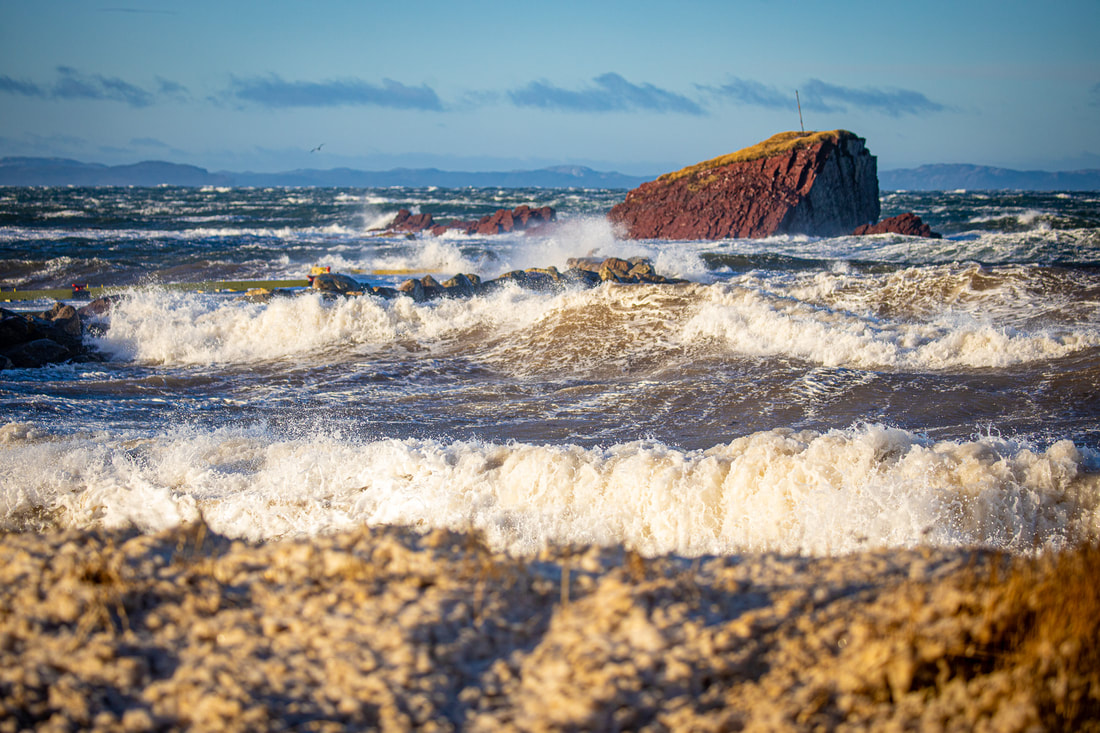 A bit rough on the water today While the rest of the country is flourishing, Newfoundland and Labrador has the reputation as a have-not province. Even through the height of the off-shore cod fishery, Newfoundlanders were a neglected lot. No, we didn’t have the swagger of larger cities like Toronto or Montreal. We had our quaint little St. John’s, which was the closest resemblance to an urban landscape we could get. Many times, we had to mail order products that weren’t offered in St.John’s. We watched as Vancouverites greeted blossoms in February, while we knew that winter could stretch into the May Long weekend. The weather is best described as dramatic A valid tourism industry hardly existed either, Yes, people ventured east from other parts of Canada, but it was usually a work-related trip. As a young fella skateboarding around town, I rarely met outsiders. Unless they were foreign off-shore fishermen from other countries, real tourists were a rarity. To make the desire to leave even stronger, we were constantly fed American media. Americans knew how to flaunt excess and that only made us jealous of what we could have. About as pretty as it gets It wasn’t until later in my forties that I rediscovered my birth province. I booked a monthlong vacation with my wife and daughter, in which the plan was to travel throughout the island. We drove to each corner of the island, seeing things I never bothered to when I lived here. I rekindled old friendships and realized the importance of lifelong relationships. That trip ignited a newfound love of my homeland, one that I hadn’t had since I was a child. I realized there was real beauty here, not only in its Ireland-like landscape but in its people. Uncrowded sandy beaches, steep rugged cliffs, and quaint towns abound My wife and I fell in love with Newfoundland so much that we decided to buy a house a year later. We purchased a vacation home in a quaint town named Heart’s Delight-Islington. We packed up our pickup truck and drove across the country to stake claim to our new abode. After a week of travelling, we arrive and are welcomed with a west-facing ocean view. Our love of the island grew during our six-month stay, as we took our time to dive deep into what the island had to offer. Sipping coffee while we stared at the North Atlantic every single morning has a way of swaying your opinion. Million dollar views on the cheap Returning to this island paradise has given me a newfound appreciation for life here. The scenery, the landscape, the solitude, and the people. My God the people. What a wonderful, generous, sincere, and kind people call this place home. Yes, there are nice people everywhere who will do anything for you, but Newfoundlanders have something extra. There is a warmth and an openness to let strangers into their lives that doesn’t exist anywhere else. Need something? Go knock on someone’s door. Newfoundlanders also have within their bones the ability to be self-reliant. That’s why almost every old-timer you meet can fix something or build anything. There’s a good chance they’ll clothe and feed you, regardless of your position in life. This alone should be enough to win the argument The rugged beauty of our coastal shores is mesmerizing. But the best part is that being next to the sea is attainable here. Almost anyone can set up a home base within a stone’s throw of the ocean. In most of the developed world, only the wealthy or very lucky can afford these luxuries. After spending 25 years in Vancouver, they know what they have. They pay millions for that view. I can also confidently say that some Newfoundlanders take this freedom for granted, but not in a bad way. It’s not like they don’t appreciate a view of the ocean, they know the sea is not reserved for the fortunate. Bell Island's steep cliffs are something to behold My wife and I are bi-coastal. We own houses on both coasts. Our $150,000 house in Heart’s Delight is nicer and larger than our million dollar home in Vancouver. We are experts on living on both sides of the country. We can, with confidence, say that there are very little shortcomings to life in Newfoundland and Labrador. Yes, the job market isn’t quite as robust as the west is, but it’s also far less expensive to live in the east. The weather has gotten substantially better than it was when I was a kid. Now, St. John’s is Vancouver-like most of the year. In my experience, small town life in British Columbia is not that enticing. Many towns offer little other than the freedom of movement. In Newfoundland and Labrador, small towns are generally warm and inviting, plus they offer quaint little shops and abundant character. Newfoundland also has a very rich arts and culture scene, especially robust in the capital, St. John’s. You’ll find a deep European influence here, with strong ties to the United Kingdom, France, and Portugal. Interesting architecture where you least expect it For travellers who feel like this east coast haven is too isolated, a direct flight to London is about four hours. That’s very enticing, isn’t it? Additionally, the eastern seaboard of the United States isn't that far away. Who's up for a weekend in New York? From shipwrecks to WW2 bunkers, history buffs love it here I've been hearing rumours of more people relocating to the east coast from out west. Most feel like they are being priced out of home ownership and life in general. If you take an honest look at what the east coast provinces offers, it's not really any different than life in the west. The slower pace affordability are two major draws to get people to leave the west. Your lifestyle doesn't change much - you can still do the same things. Sure, we might get a bit more snow depending on where you live, but frigid temperatures are virtually non existent like they are in the rest of Canada, save for south western BC.
I think it's time to discover what you've been missing. Wayne Parsons If one were to ask me what my favourite trail is, I would reply, “The next one”. But that’s not the purpose of this article. However, I find it difficult to pick one trail as my all-time favourite, but I’ll narrow it down to sentimental value. Ladies Only, Mount Fromme - North Vancouver, British Columbia. An iconic North Shore trail built by the legendary Todd “Digger” Fiander. Although Ladies Only is far from my current favourite, it has a special place in my heart. It was my first introduction to North Shore mountain biking back in the mid-90s when I was first learning how to ride. Back then, I stumbled upon this trail almost by accident. And after seeing it for the first time, I thought it was a hiking trail. I was convinced nobody in their right mind could ride it. Since I just started mountain biking, most trails were daunting to me. I took this as a challenge and set out to learn how to ride these challenging North Shore trails, like Ladies Only. It was almost an addiction to keep pushing my riding abilities and honing my craft. Like a lot of North Vancouver’s mountain bike trails, Ladies has a double black diamond rating due to a few butt-clenching features, like the Big Stupid - an off-camber rock roll at the end of the trail that exits through two narrow trees. Alternatively, there is an even sketchier exit that features a very steep fall line filled with bald roots and slippery rocks (see photo). I rode Ladies Only (that sounds so wrong) so many times that it became my training trail for racing downhill. I would push my 40-plus-pound downhill bike up there and loosely time myself, before the invention of smartphones and Strava. This trail almost single-handedly allowed me to make it to the elite ranks in downhill racing. That was nearly 25 years ago. Back then I didn’t mind it if there were ladder bridges and log skinnies on a trail. Now, you can find me avoiding those trail features at all costs. Still, Ladies Only holds a special fondness that will always stick with me. I don’t ride it very much anymore, trading in slow tech lines with speed and flow. But I still like to go up there, sometimes without a bike, just to look around at all the old lines.
If the cycling world could summarize what British Columbia, Canada is known for, there’s a good chance they would say mountain biking. They’re not wrong, as BC has some of the best mountain biking trails, bike parks, and talent anywhere on the planet. Yet, from a broader view, BC offers more than mountain biking. British Columbia’s mining history and commercial forestry have carved a playground of gravel access roads throughout the province. Point to almost anywhere on a map and you’ll see what I’m talking about. A spiderweb of dirt roads where dirt roads shouldn’t be - far into the backcountry, through mountain passes, and deep within Boreal forests. Thousands of untouched kilometres of gravel goodness - more than you’ll see in a lifetime - are there for the taking. For gravel cyclists, BC’s dirt road network is a bike park. Roads that are so perfectly laid out, you’d think someone designed them specifically for gravel bikes. In fact, the explosion of gravel cycling over the past few years has taken the industry by storm. They used to say that road biking was the new golf, but now gravel cycling seems to be taking over where road riding left off. Gravel bikes are everywhere. Mostly every bike shop has invested heavily in this fledgling activity. Aging mountain bikers are looking for mellower two-wheeled activities while maintaining the need to explore nature. I’m happy to lump myself into that demographic as I explore further into my backyard. It’s tough to narrow down one area of British Columbia as being the best for gravel biking. There are far too many areas to comprehend as “the best”. Yet, one could argue that the Cariboo Region of the province is the clear winner. I have yet to explore every gravel-riding area of BC, but I would cast a vote in favour of the Cariboo. Atop the province's geographical centre and in an area known as the Bonaparte Plateau, The Cariboo is a gravel grinder’s playground. Spreading out from towns such as Clinton and 70 Mile House, you’ll soon discover endless smooth dirt roads waiting for you. Roads that were cut in because of the gold rush were soon used by ranchers, farmers and now gravel cyclists. These roads are quiet, as you may only encounter a single vehicle in a two-hour ride. Your only traffic concerns are of the bovine variety. From that... To this: Although the riding is epic, the scenery is the true champion here. Long stretches of gravel roads will take you through sprawling ranches, aqua-coloured lakes, and snow-capped mountain ranges. The upper Fraser river commands this region, as it carves a massive canyon of silt bluffs and post-glacial hoodoos with dirt roads interspersed around them. If you have an excuse to bring a proper camera with you, this is it. If your legs are up to the challenge, descend down to the Big Bar ferry. This is a river current-operated cable ferry that will take you across the mighty Fraser. On the other side is a whole other section of possibly the best gravel roads in existence. Once there, you are one of a small handful of people to have ever ridden a bicycle on these roads. You truly feel as though you are hundreds of kilometres from civilization. Morning view of the Marble Range mountains from Meadowlake Guest Ranch A must-see viewing area is Cougar Point. Even if you decide to drive to it, it’s worthwhile to go there for the scenery. At over 900 meters (3000 feet), you’re looking almost straight down to the Fraser river. Dropping in is not for the faint of heart, and once you do, you’re committed. Within minutes, you’re wondering when the last time it was you checked your brake pads. Fortunately, there are several 180-degree switchbacks to take a break on. You’ll ask yourself, why didn’t I bring my mountain bike? But when you hit the bottom, you’re glad you chose the gravel kind. Full commitment here means long rides with monstrous climbs and butt-clenching descents. You’re in it to win it or die trying. Cougar Point. If you look way down to the valley bottom, you can see quite possibly the best gravel roads in the country. The Mighty Fraser River. This is big country. The Cariboo is not your average backyard jaunt. These are long, arduous rides. Being prepared is an understatement. Everything is big here - the landscape, the climbs, the descents, and the distance. Copious amounts of water and ample supplies of food are a must to complete the job. I'd recommend four-wheel drive vehicles with low range to rescue stranded riders, depending on where they are. I’ve driven to the good parts with beginners to give them a glimpse of the possibilities of this area. I would never take a fledgling cyclist into these depths without some sort of bailout. And if you are bailing people out, make sure your car has enough fuel, as the nearest petrol station is a long way away. A bike with at least 40c tires will do, but wider tires will probably make you happier. While the little town of Clinton is a good enough starting point, you’ll be much better off making the midway point your home base. I’d suggest checking into Meadow Lake Guest Ranch. You’ll use these luxurious log homes as a hopping-off point to explore this vast region. Starting at Meadow Lake allows beginner riders to enjoy themselves as the surrounding roads are, for the most part, flat. Seasoned vets will enjoy this home base as they embark on all-day rides, looping back to the property. You can make the rides as long or as short as you want. If exploration is your motive here, guaranteed you’ll be out for hours. Riders of all skill levels can fan out from the lodge and choose the length of their routes. If you’re lucky, you’ll see a moose, a bear, a fox, and possibly a wolf. Meanwhile, deer are plentiful, so prepare for an encounter. Mosquitoes are abundant, enough so that in summer months, they might carry you away. Best to visit in early fall when the mozzies are all gone and the larches are glowing yellow. This is Canada’s wild west, so expect anything and everything. The crowds can be a bit judgy. The Roadhouse at Meadow Lake Guest Ranch. There are more modern log homes to stay in, but this is one of our favourites. From Meadow Lake, you can ride far enough to find yourself at Gang Ranch, a working cattle ranch that has been in operation since the 1800s. As you travel through narrow, twisting roads, out of nowhere is the Churn Creek suspension bridge, dating back to 1914. Take your time and enjoy the grandeur of your surroundings. This part of the Cariboo is so remote, you’ll be surprised that anyone lives here, let alone earns a living being this far from civilization. A patchwork of hay pastures nestles below silt cliffs and rolling grasslands - a perfect backdrop for an adventure. The Churn Creek Bridge at Gang Ranch. Adventure is the keyword here. To engulf yourself in your ride, you need to embrace the landscape around you. Explore the side roads, wave to the locals, and be prepared to be on your bike for hours. These roads entice you to see what’s around the next corner. And remember, take photos. As for bike setup, any off-the-shelf gravel bike will do. You won’t need ultra-wide rubber, but anything in the 40-44c width would be ideal. Fresh brake pads are a must, especially if you want to tackle the descent from Cougar Point. If you do find yourself committed to one of these monster downhills, you’ll have to ride back up an equally steep, lengthy climb. Low gearing will save you from taking your bike for a walk. Most important - bring supplies. On-bike storage with lots of water and food to help get you out of those massive canyons. A massive fire devastated the area in 2020, and some of the rides take you through ground zero. No colour edits are needed. The colours are really that bright. Fall foliage in this region is like no other... and the mozzies have gone into hibernation. Finally, don’t feel ashamed of doing many, smaller loops. Not all of us have the fitness to lay down a hundred-kilometre ride in this region, and that’s okay. Remember, this area is very remote and you’ll soon regret not being prepared. Have fun, take in the views, and live in the moment.
Wayne Parsons Let's face it, you probably think photographers are overpriced, right? Well, let me shed some light on our backgrounds and what value you get in hiring a professional photographer. In no particular order, but all equally important, here is my list of some valuable skills one should possess:
There are many aspects that make choosing a photographer easy. Hopefully these pointers will help guide your decision making process. Cheers Born to Dig
This is my shovel. There are many others like it, but this one is mine. My shovel is my best friend. It is my life. I must master it as I must master my life. Without me, my shovel is useless. Without my shovel, I am useless. I must use my shovel truly. I must dig faster than my enemy, who is time itself. I must dig before it gets me. I will. Before Digger I swear this creed: my shovel and myself are defenders of my trails, we are the masters of our craft, we are the saviours of my life. So be it, until there is no time, but perfect trails. Amen. I have two shovels that have stuck with me for every trail I have started, abandoned, or completed. These are only shovels, but two of my most prized possessions. These two fibreglass handled beauties were purchased from a local hardware store back in 2005 and have been with me to this day. I have used these two, and only these two, as a paid trail builder, as well as a volunteer who was thrilled at moving dirt. My shovels were on duty for many landscaping projects in my yard. They partnered with me when I was employed as a landscaper, instead of being sullied with paltry company hardware. These tools represent fond memories - ones from completed projects, as well as jobs that were never finished. These two objects represented a gateway to happiness; a moment in solitude in the forest away from everyday stresses. Your shovel is only a tool. It is a hard heart that digs. If your building instincts are not clean and strong you will hesitate at the moment of truth. You will not build. I would often go out to work on my trail, not because I wanted to, but because I felt I had to. I built trails as a stress relief. A few hours to live in my head in complete solitude, away from everyone. Most often it seemed, building and maintaining a trail was more important than riding my bike. Even without a plan nor any direction, scratching in a line was my idea of gratification. I tried to justify riding my bike over digging, but the bike usually lost out. One part guilt plus one part obsession equaled full commitment to trail building. Choosing to ride my bike would set me back a day, while two hours of digging got me that much closer to completion. This is trail building, and it is an addiction. It permeates your thoughts and consumes your time. It affects every facet of your life and the lives of those around you. It takes control of you and destroys your body. You spend an unnatural amount of time looking at maps, examining the hillside, imagining perfect lines through the trees. You spend more time on Google Earth than you do riding your bike. You tell shoppers at the hardware store what shovel to avoid because you have broken almost all of them. The midweek doldrums drag on and it makes your skin crawl. The forest beckons for your return. You talk the talk. Do you walk the walk? Writing the first draft of the story is the most fulfilling. The project’s Treatment presented in flagging tape. Taking the time to examine each contour and feature on the hillside, planning the entrance and exit of every corner. Will it be a long sweeping turn or a tight switchback? How will you control riders’ speed without hindering flow? Always in the back of my mind are the time chasers. They will always create cheat lines and braid corners, so I plan my lines to defeat them. If I am foiled by a cheater, the short line becomes the more difficult one and, of course, the quicker option. When turns are built so perfectly, that to braid them would mean that you simply don’t enjoy riding. Deep and steep berms with shallow exits - berms so effective that brakes aren’t needed. I’ve taken half a day to complete one berm to make it perfect. One fucking berm. A single pile of sculpted dirt that can be the crux of the entire trail. Planning your project around one feature can be a challenge, but without incorporating it, your whole trail has a lot less character. There is almost nothing as beautiful as a completed trail. A perfect ribbon of manicured earth, following the contours of the hillside. It is art in its purest form. The methodical process of bench cutting through gold has no equal. We create something that wasn’t there before. We create experiences for others, whether good or bad. After all, the trail has always been there, we’re moving the dirt away that isn’t one. A day without digging is like a day without sunshine. Good trail building takes time to learn and adapt to. We’re all still learning, as we are only as good as our last effort. You can’t dive in and expect good results right away. Make mistakes and learn from them, because even the best builders have produced forgettable trails. I’ve started trails and had to abandon them because I couldn’t figure out the flow. I’ve constructed trails around a single feature, while trying to envision the story. Your technique requires training because it’s so destructive to your body. I’ve come out of the bush so tired that I could barely walk, and that’s far from hyperbole. I’ve bonked more than once, left my gear on the trail so I could find food. I woke up the next day with shoulders so sore and my back wrecked that I couldn’t think about riding. But what would immediately consume my brain would be finishing my trail. You write "Born to Dig" on your shovel and you don’t ride a bike. What's that supposed to be, some kind of sick joke? I’ve gone three consecutive years without riding a bike, but I couldn’t go that long without trail building. I didn’t own a mountain bike and I was out almost every weekend sculpting dirt. Why? Because it’s a fucking addiction. I missed using my shovels more than my need to ride. The love of the process of building was my motivation. When I used my flatty to bench cut through gold, the results were more rewarding than riding my bike. My shovels are well used - the steel spades have worn down from years of earth moving. They have outlasted a couple of cheap chainsaws and many more picks. I have tried cheaper alternatives as back ups, but those shovels couldn’t withstand the demands of trail building. I have broken many imitations, but in all that time, my two shovels have stood strong. Never faltering, never giving anything up to the task at hand. They were used as levers to move large boulders, twisted and groaned under heavy loads. They have served as tampers to pound wet soil. My shovels have even served as javelins to scare off packs of coyotes and curious bears. Although my battle hardened shovels have served me well, they are retired from active duty. They helped realize my desire to help positive experiences for others. These tools weren’t ordinary trail building implements, they were building memories. They allowed me to construct trails for everyone to enjoy, and with that comes a certain level of pride. Years have gone by and priorities have changed. I have moved on from building mountain bike trails and now my shovels sit silent. Wayne Parsons My family was lower middle class and it was the mid eighties. The economy was in the tank, and both my parents earned a modest living while supporting my brother and me. Practical needs such as food, clothing, and shelter rank over toys. Luxurious items such as new bicycles are out of reach. Most of my bikes were hand-me-downs from my older brother, or found at the dump by my dad and usually they had mechanical issues.
In 1985 my parents recognized that my brother and I wanted new bikes. We ate ketchup sandwiches on white bread to splurge on a couple of Free Spirit All Terrain Bicycles from Sears. My best friend also got a new mountain bike from the hardware store. There was pressure to keep up with the Jones', while keeping bored kids out of trouble. What a time it was. Mountain biking was a new thing and I had a new bike. At that time, to have a dedicated off road bicycle was earth shattering. It advertised its off road intentions, “All Terrain Bicycle” right on the frame. This proved that it was no road bike. Although to us, mountain biking always existed, with or without the categorization. We grew up at the end of a dirt road, with a few trails out of our backyard scratched in with our dirt bikes. We modified ten speed road bikes by turning up the handlebars so we could ride our trails. We borrowed dad’s shovel to go pile dirt so we could jump our bmx bikes. But now, we have purpose-built off road bicycles with low gearing. A world of possibility and exploration opened up before we even threw our legs over our new bikes. Even to this day, my love of exploration came from owning that first mountain bike. Mountain bike maintenance didn’t come from mechanical fascination in those early years. The shit gear we were using made it essential. These bikes were piles of shit. My brother’s bike fared better than mine, as he spent more time cleaning it and I rode mine. The first part to fail was a cracked crank arm, followed by bent chain rings, and blown out hub bearings. There was only one bike shop where I grew up, and they helped me keep that bike running for what seemed like an eternity. I was young, confused, and so naive. I thought my $600 was the epitome of technological advancement. As a kid who wore my brother’s old socks, I considered any toy that cost that much money to be the height of technology. I was so wrong; so disheartened from my pride & joy falling apart before my eyes. Growing up in the sticks, I had to learn how to keep my bike working. I gathered whatever information my little brain could take in. Manuals describing how to pack a hub, I never knew existed. Nor anyone telling me that non drive side pedals are the opposite thread. Crank arms installation with a hammer and block of wood. If cables aren’t fraying, I lube and reuse them. The bike’s steel single-walled rims bend and once again straighten. The process of mechanical experimentation taught me what worked and what didn’t. My father was a car mechanic and he never once paid for labour on anything. He built our house by himself. He rebuilt engines and swapped automatic transmissions for manuals. I learned that ethos from the fact that he could fix pretty much anything, so that was my norm growing up. Even at twelve years of age, I thought that bringing my bike to get fixed at a bike shop made no sense. I adopted the idea that if it went together, I could take it apart. I got it wrong more than I got it right, but I was learning. I was repairing broken parts while adopting personal responsibility for wrecking shit. Years later I started working in the bike industry. I also started racing. The love of bicycle maintenance I learned as a kid continued to blossom. Stripping my bike down, bolt by bolt, to make it perform better was a carryover from those early days. I was the type of guy to dive into rebuilding brand new forks because they shipped too dry. I would dismantle pivot bearings, clean and re-lube them to squeeze an extra few months out of them. I raced motorcycles and learned that if my valves needed to shimmed, then I was going to have to figure it out. I refused to let someone re-valve my suspension, so I did it myself. Paying for labour when I have two hands and a brain? Not a chance. I’m not saying I’m special. I’m a mediocre bike mechanic at best. I’ve learned a lot from people with far more skill than I will ever have. My desire for self sufficiency was born from growing up poor. It taught me to love the process of trial and error. At the risk of sounding like an old codger, kids these days will never know the pain of those early bikes. The expectation of failures occurred when you least expected them. Bikes now are perfect and rarely break under normal use. Entry level bikes are much higher quality now than they were a few years ago, let alone from the eighties. And yet the art of maintaining your bike is as vital as ever. Tell me a better feeling than unbolting your bike piece by piece? Cleaning every part, and rebuilding it with new oil and grease. Name a better ritual than setting up your brake levers, because there is none. The process of maintenance used to be one that involved fixing what is broke. With modern bikes, we are weeding out personal preferences and not much more. We’re fortunate that we have such reliable bikes now, but my feeling is that riders have become less self-sufficient. I have no way of quantifying that statement, but is that a fair assessment? It goes without saying that bicycles are far more complicated now than they were back in 1985. Although, standardization usually means better fitment. Long gone are the days of pop can shims and packing bottom bracket bearings. Bikes now are for lack of a better description, plug & play. So in a way, the process of maintenance has gotten easier as bikes have gotten more complicated. I’m less obsessive about maintenance, but I still enjoy the ritual. Cleaning my drive train, installing a new bar, and figuring out how to customize a perfect bike. Now it’s more about changing the look with new parts rather than a question of functionality. But, I’ll always reminisce about those early days of repairing my bike. No bike stand, no proper tools, no real know-how other than the ability to try. I wouldn’t trade that experience for anything. **This article was originally published on the Roots, Rants, and Roars website, 2020. Not all the original photos are available. Exploring the Island in the Bay The last time I visited Bell Island was a distant memory - over thirty years ago. It was long enough that I can not recall what I did nor where I went. Whatever it was, the memory didn’t stick with me. I was far too young to appreciate what it had to offer. For my wife Johanna, a resident of British Columbia, exploring most parts of Newfoundland is a new and exciting experience. I knew the beauty that the bay island possessed. I grew up across the water in Conception Bay South. Seldom trips in my father’s twenty foot skiff to the Belle’s shoreline left me in awe and wonderment. One hundred meter sheer shale cliffs with plenty of secret coves and the occasional cave was not seen on the docile shores of Manuels. Johanna and I jumped at the opportunity to explore Bell Island on the last day of summer. Coinciding with our island hike was the decision to bring along food and make the experience more memorable. We opted to take part in My Food Hike, a promotion by Roots, Rants and Roars that encourages people to share their hiking experience along with a trail side picnic. There are fifteen restaurants who are on board supplying packed lunches for us wandering souls. We chose the nice people at Rocket Bakery to fuel us on our hike. They offer a choice of kale & toasted almond salad, or, pasta & veggie salad with ranch dressing as a starter. The main consists of a chicken club with charred red onions and bacon, or, homemade hummus & veggie sandwich. Homemade lemonade and a ginger molasses cookie completes the meal. Everything is packaged into a Roots, Rants and Roars insulated backpack - yours to keep! In addition, RRR has supplied a hiking playlist and is available for download on Spotify. Directions Getting to the ferry terminal from almost anywhere is an easy task. In our case, twenty minutes from downtown St. John’s was all it took. Get on Portugal Cove Road from the city core and within minutes, you’re at the port. Taking the ferry is a painless excursion as well. We departed Portugal Cove on the ferry, Beaumont Hamel, and a twenty minute sailing (and several photos) later, arrived at our island destination. While on Bell Island, you can explore the area on it’s two main routes - Lance Cove Road and Middleton Avenue. Both run most of the length of the island. We chose to go along the southern shore from Memorial street, which turns into Nish Jackman drive, which then turns into Lance Cove Road. We came to the end of the route at a short dirt road called Bell Road. There we found two gated dirt paths which allowed us to reach the feature that gives the island its name - The Bell. Johanna and I chose the grassy trail that runs parallel to the cliff’s edge. On this approximately one kilometer path, you will think you’re on a different part of the planet. We didn’t get too close to the edge, but the views here are unrivalled almost anywhere. The drop is a straight down, one hundred meter fall to the rocky shore, so we kept back from the precipice. We can see part of the upside down bell in the distance. After meandering our way through tall grass, we arrive at our picnic site overlooking the almost surreal looking rocky outcropping. Rocket Bakery’s trail side meal offerings are refreshing and light, perfect for destination hiking. Great views and tasty food goes best with good company.
Wayne Parsons My wife Johanna and I lost our jobs in early 2020, just as the pandemic hit. We went into lock down and tried to reassess our future and what we were going to do. After much deliberation, we decided that maybe we should buy a house in the province where I was born - Newfoundland. Then, we would pack up a bunch of stuff and drive across Canada to claim our prize.
We both loved our visit there the year before. Plus, the real estate market there was going down the toilet. Perfect. So, we started out search to find our perfect little getaway. We looked virtually everywhere for that perfect little home. After a couple of months, we found one in the town of Heart's Delight-Islington. In case you haven't realized, a small portion of the photos on my Instagram feed were taken from our back deck in HDI. West facing sunsets and right next to the ocean. How could I not? But I digress. Johanna and I spent seven months on the rock. We travelled, we saw friends and family, and we did side projects for Tourism Newfoundland. It was such a great escape from the rest of the world, as we were locked down in our own protective bubble. Anyway, onto the story of the image. Our time was up and we had to drive back to British Columbia. In January no less. We headed for the ferry port town of Port Aux Basques on the west coast of the island. Having a few hours to kill, we took a small trip down the southern coast to the town of Rose Blanche. Once there, we discovered this beautiful lighthouse. Lucky for us, there was a major storm happening at the same time. What you can't tell from the photo is how windy it was - Johanna was having trouble walking! The ground cover vegetation was a pleasing golden brown and the sun was dipping into the horizon, giving warm tones to the scene. And my wife, being the ever present model she is, wore the perfect coloured coat for the scene. Or was she just protecting herself from the elements? I used my Canon EOS R combined with my trusty Canon EF 100-400mm ii shot at 100mm, iso 800. It turned out to be one of my favourite photos, mainly because of the memories it created. Wayne |
Wayne Parsons
Documenting my experiences and travels through photography. Archives
June 2024
Categories |











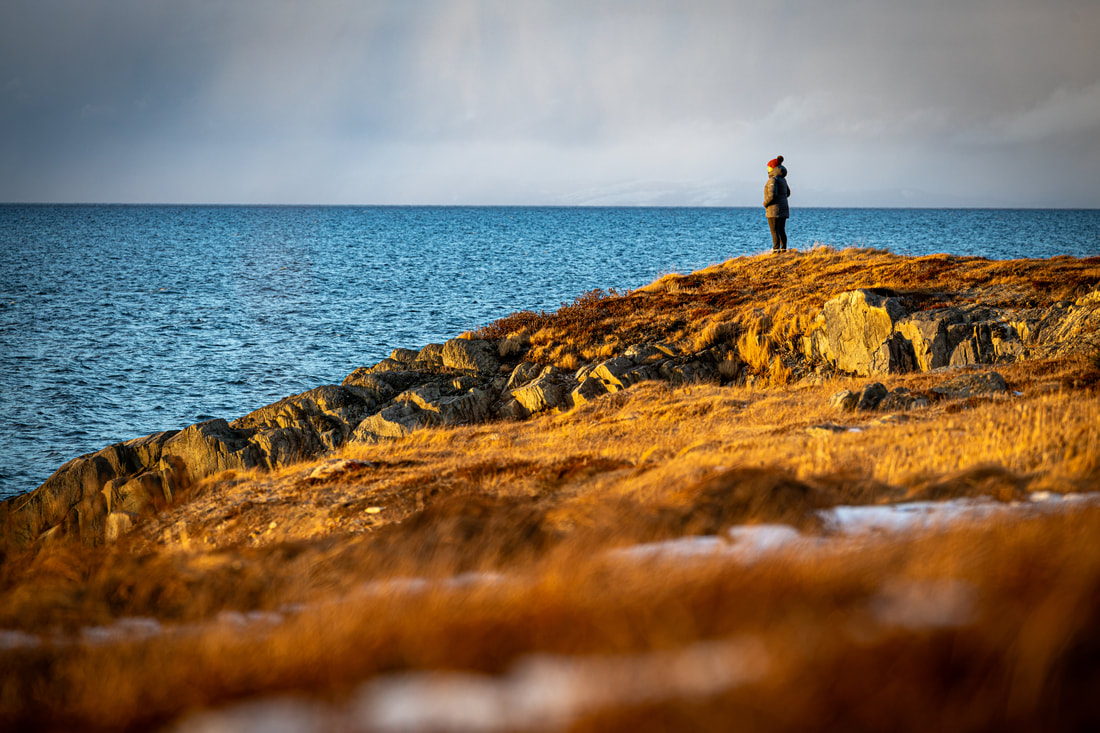
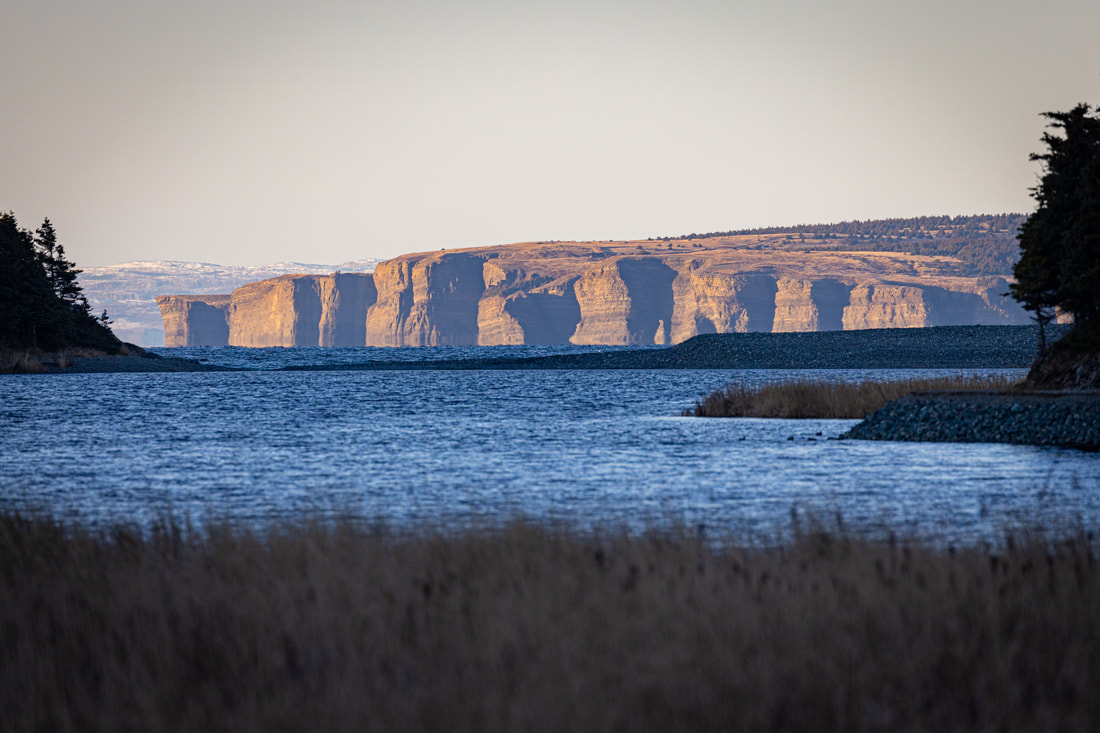








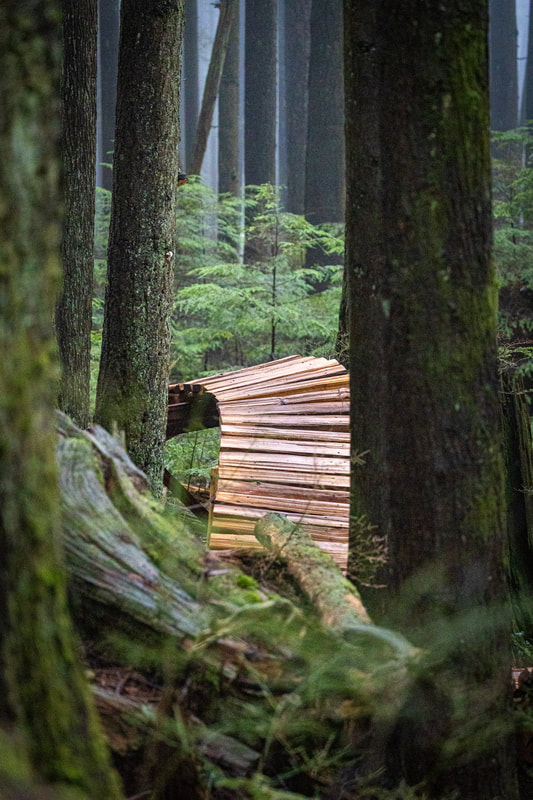
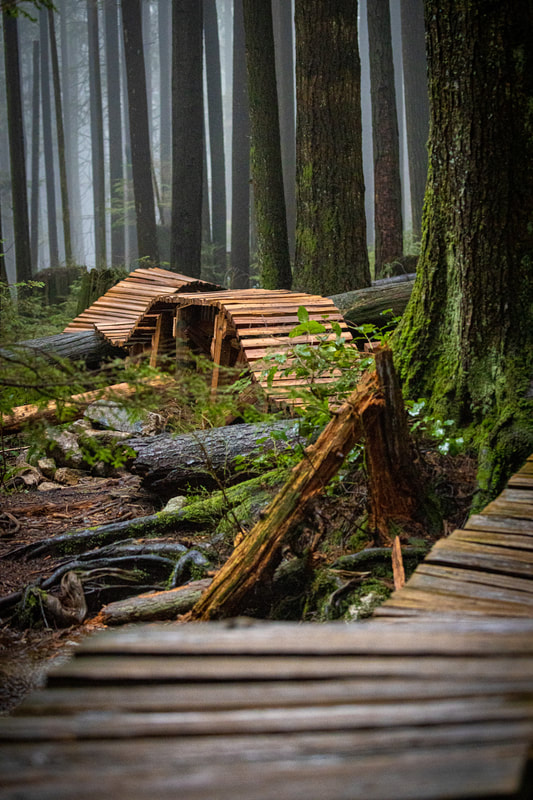
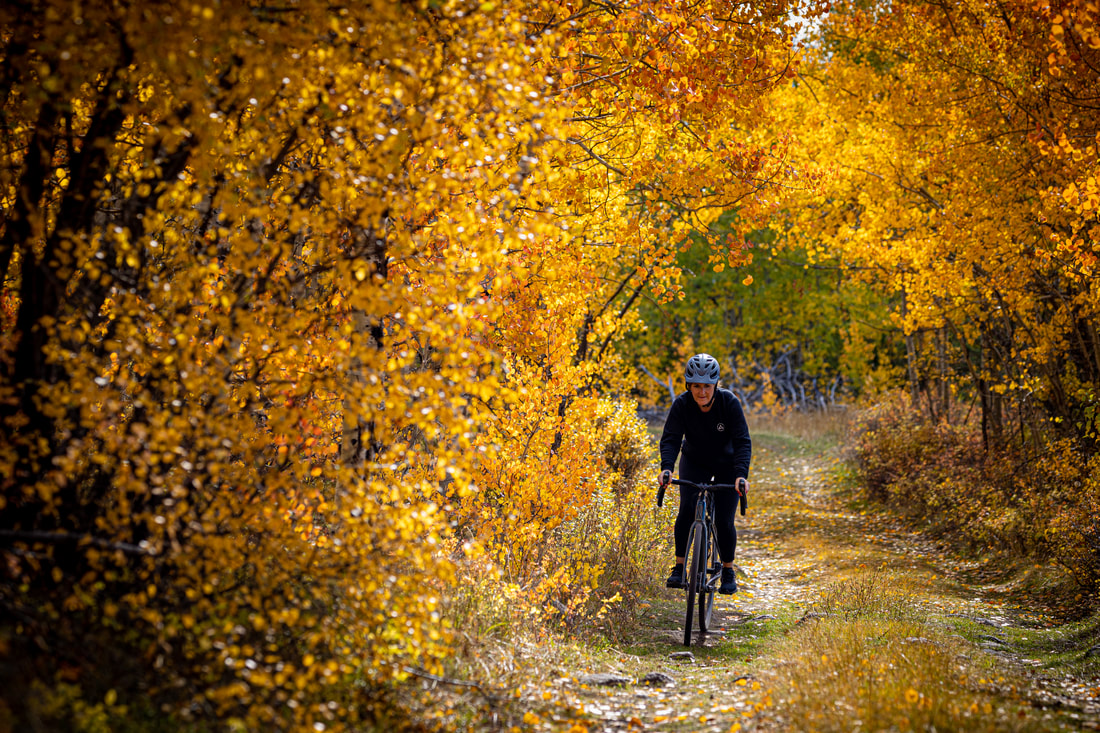
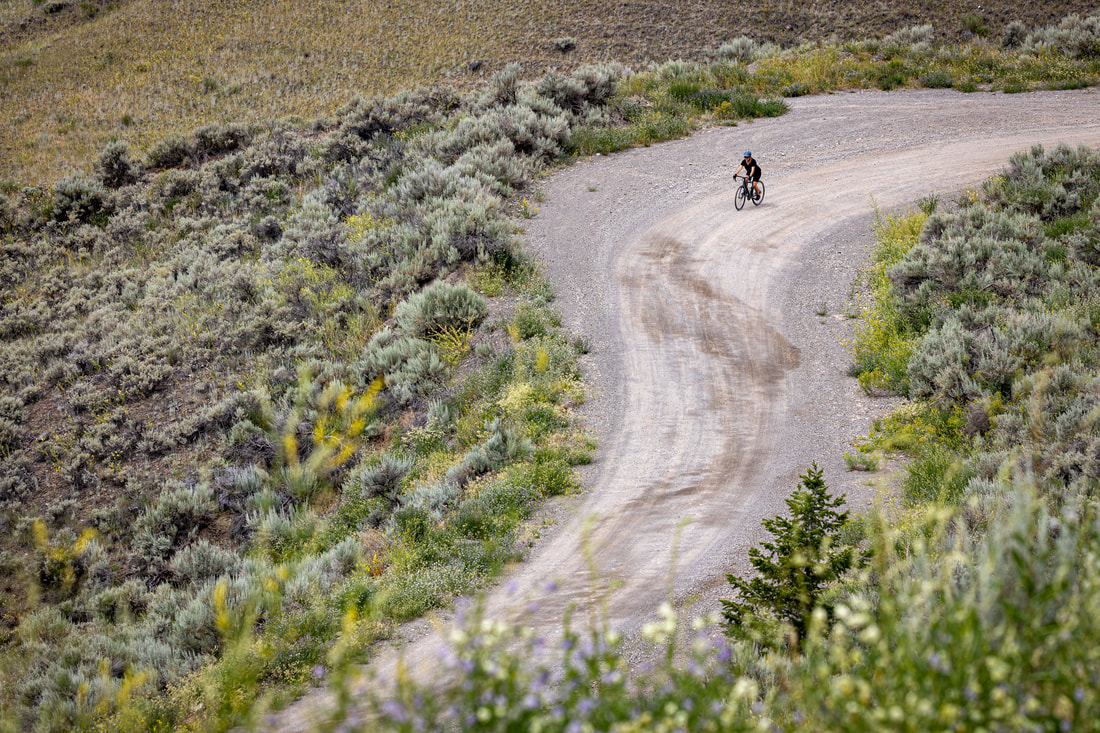
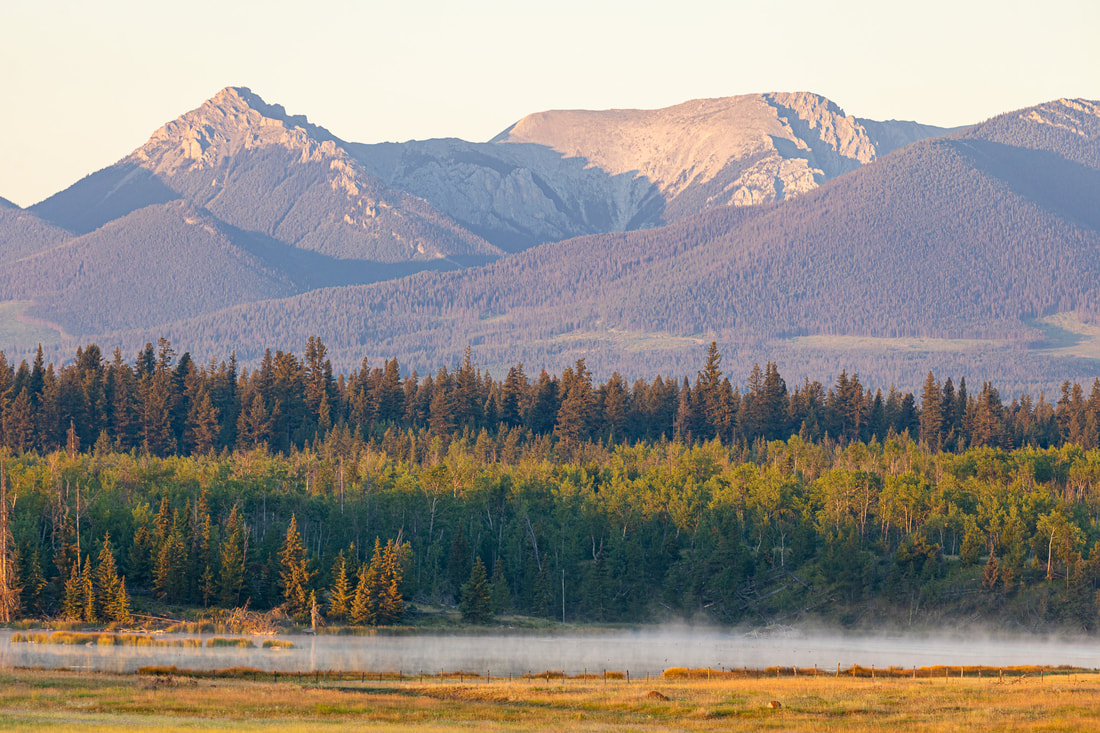

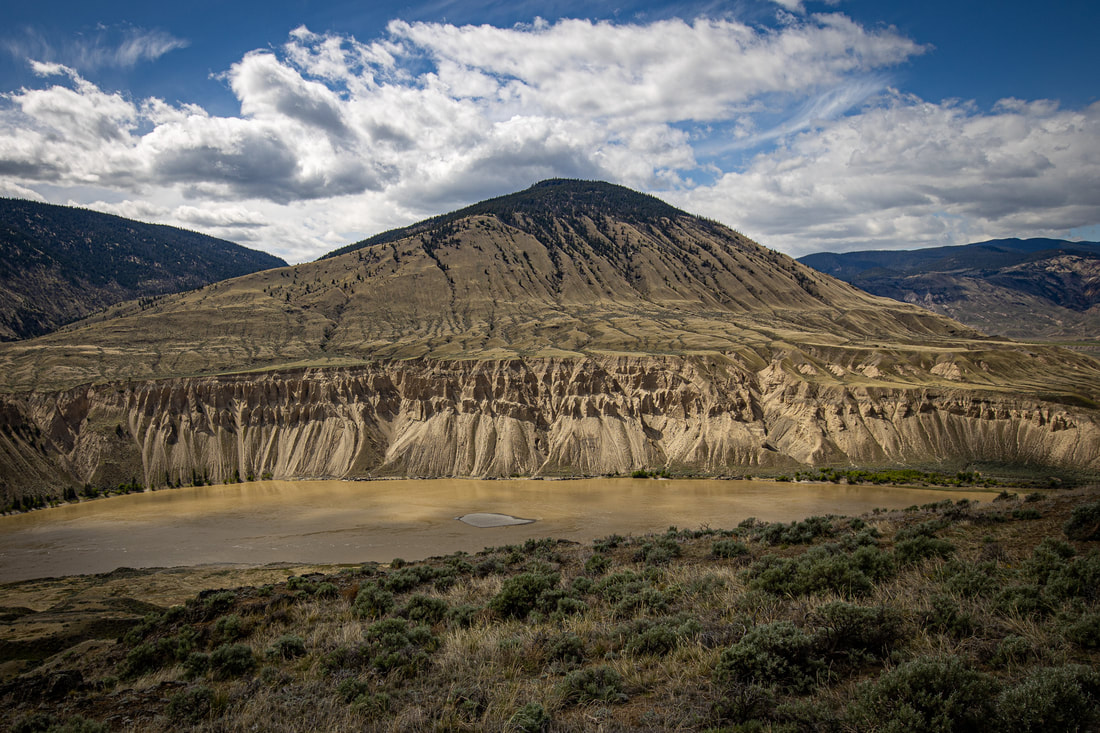
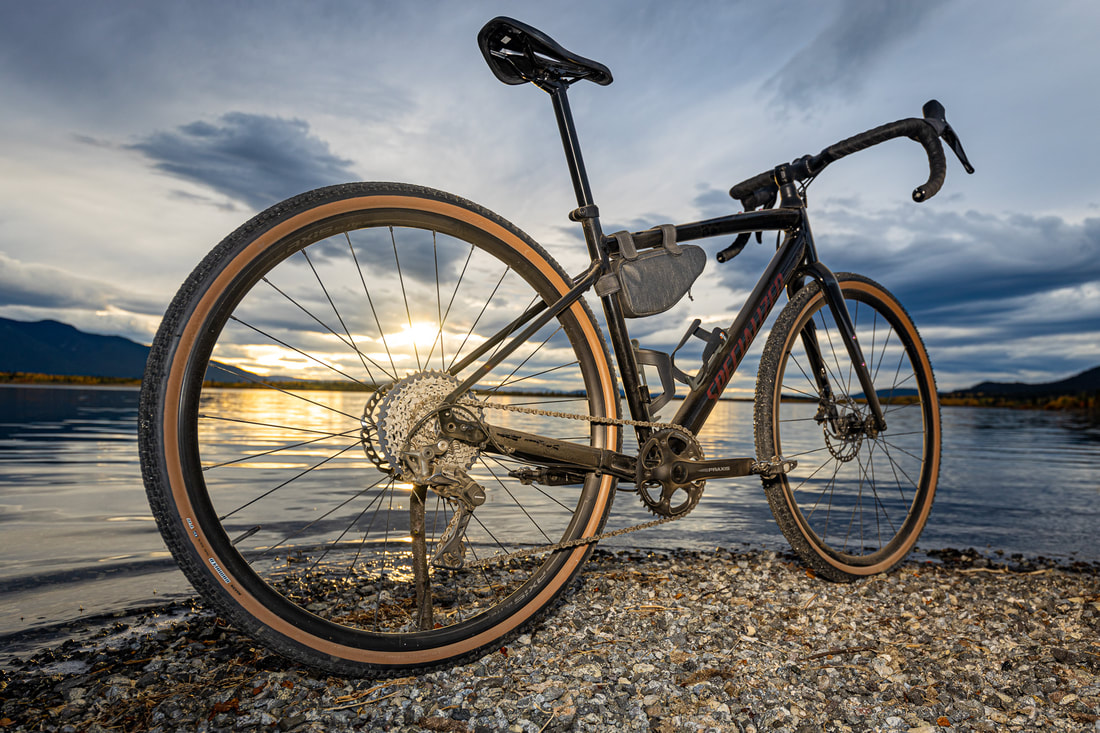
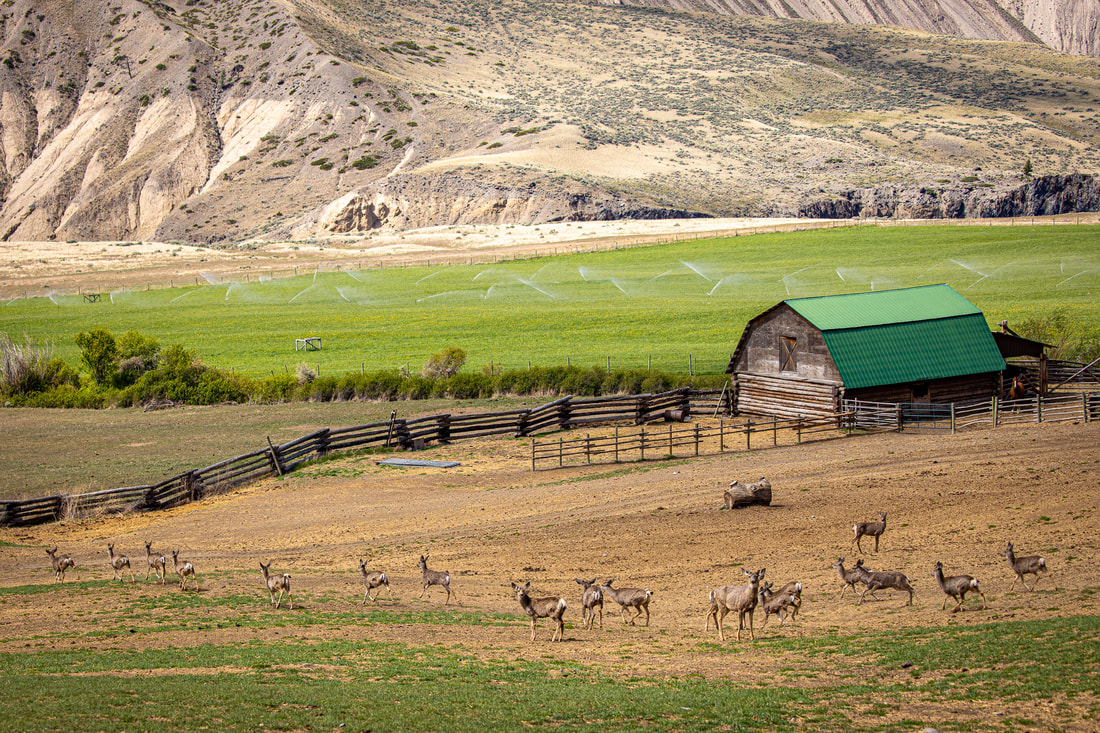
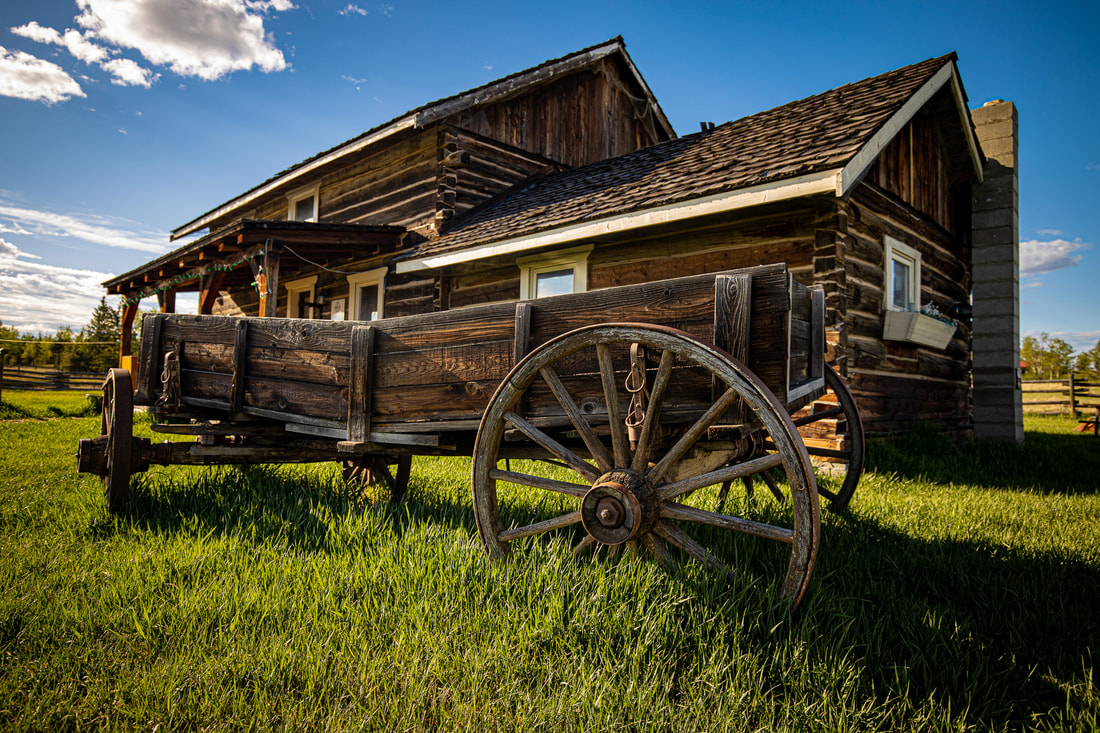

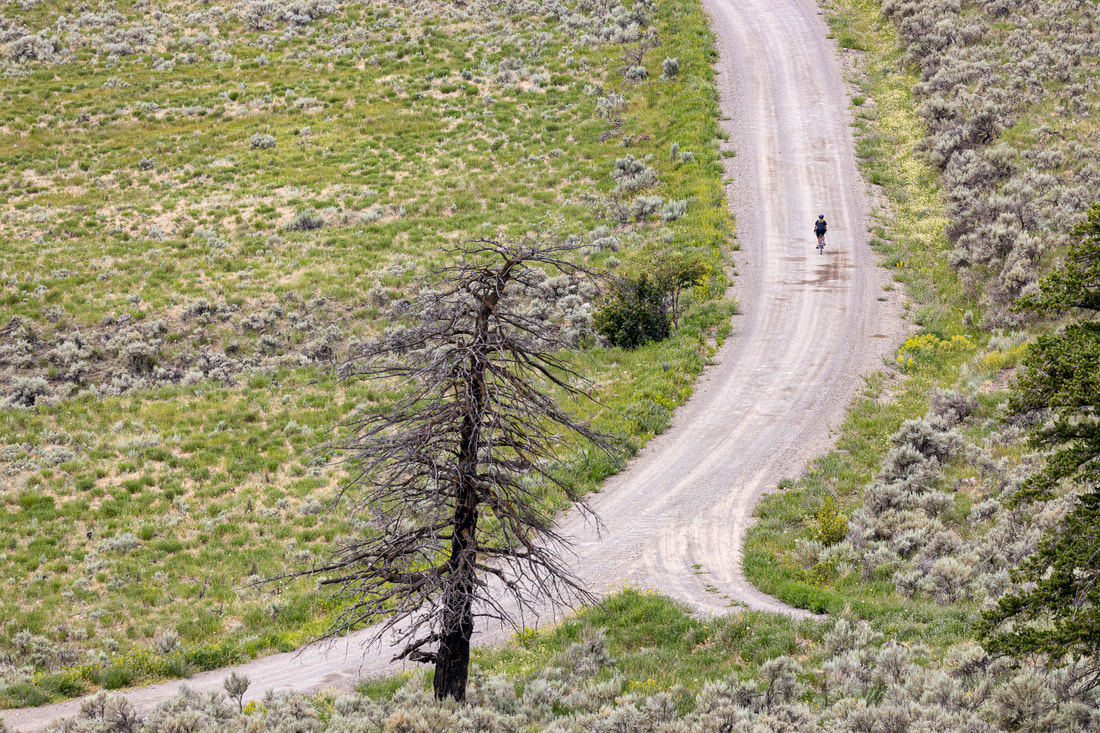
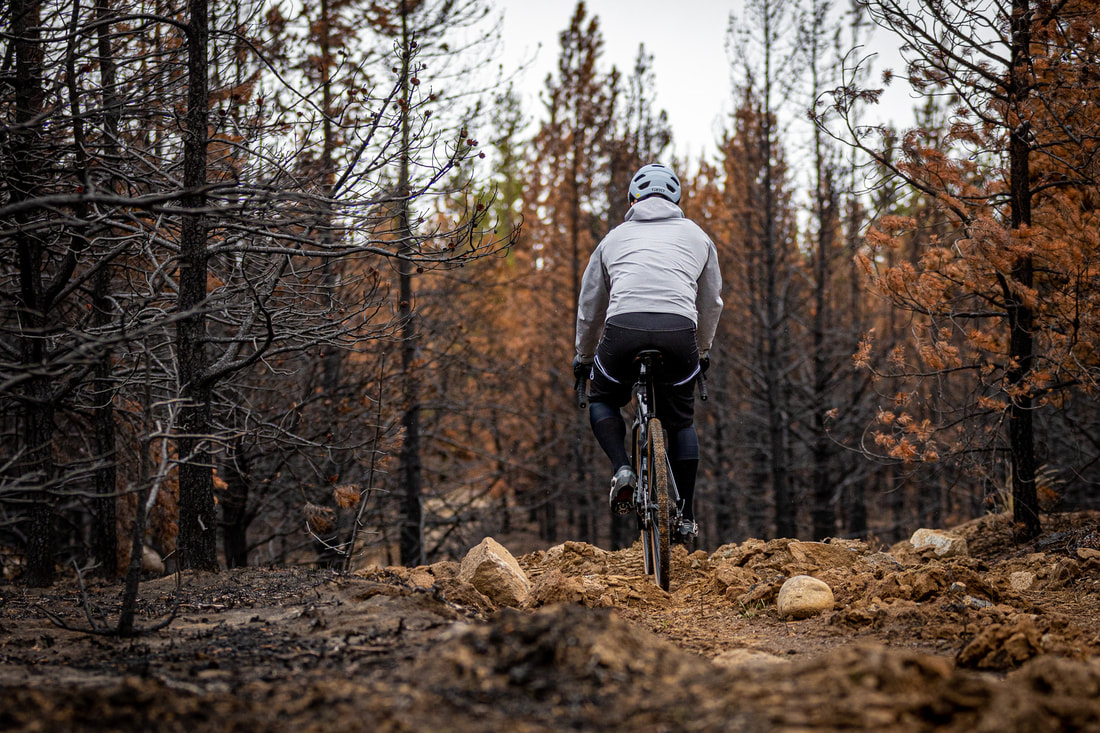
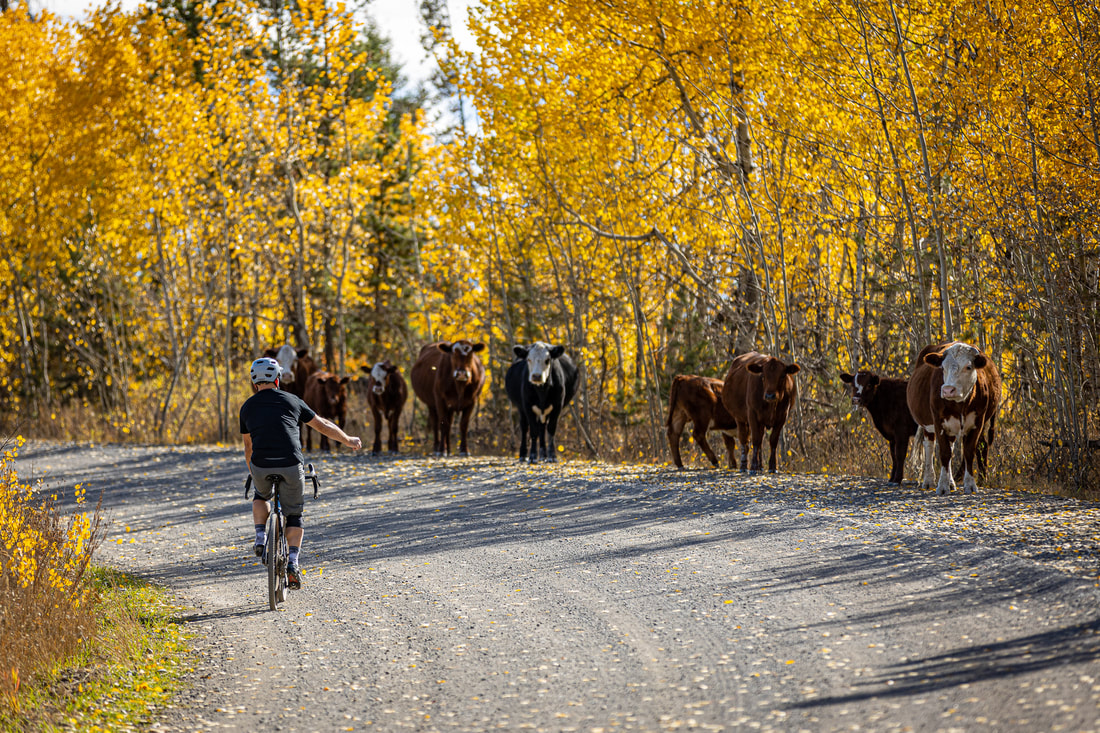
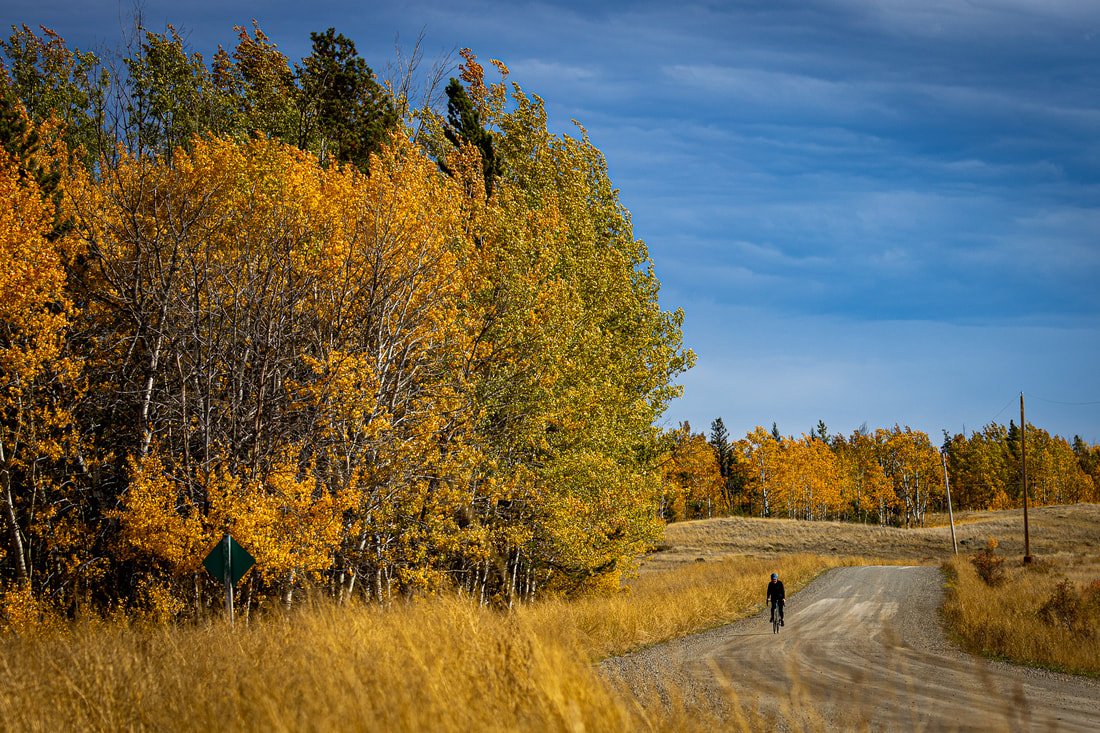
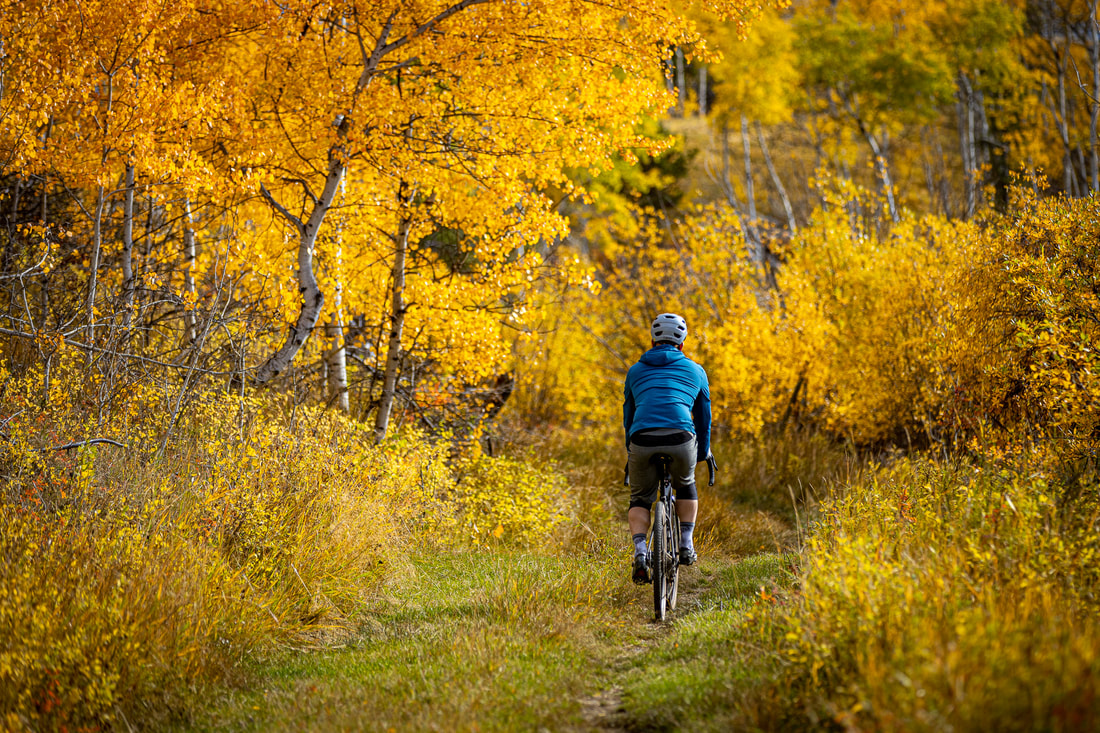
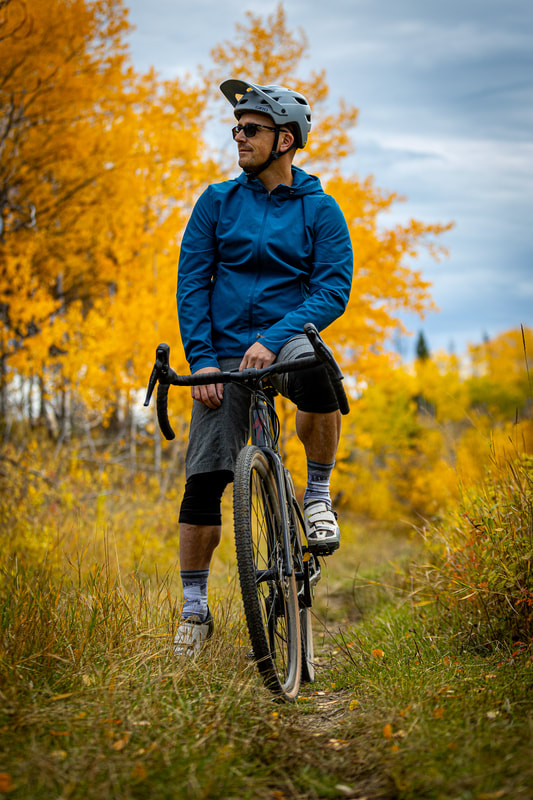
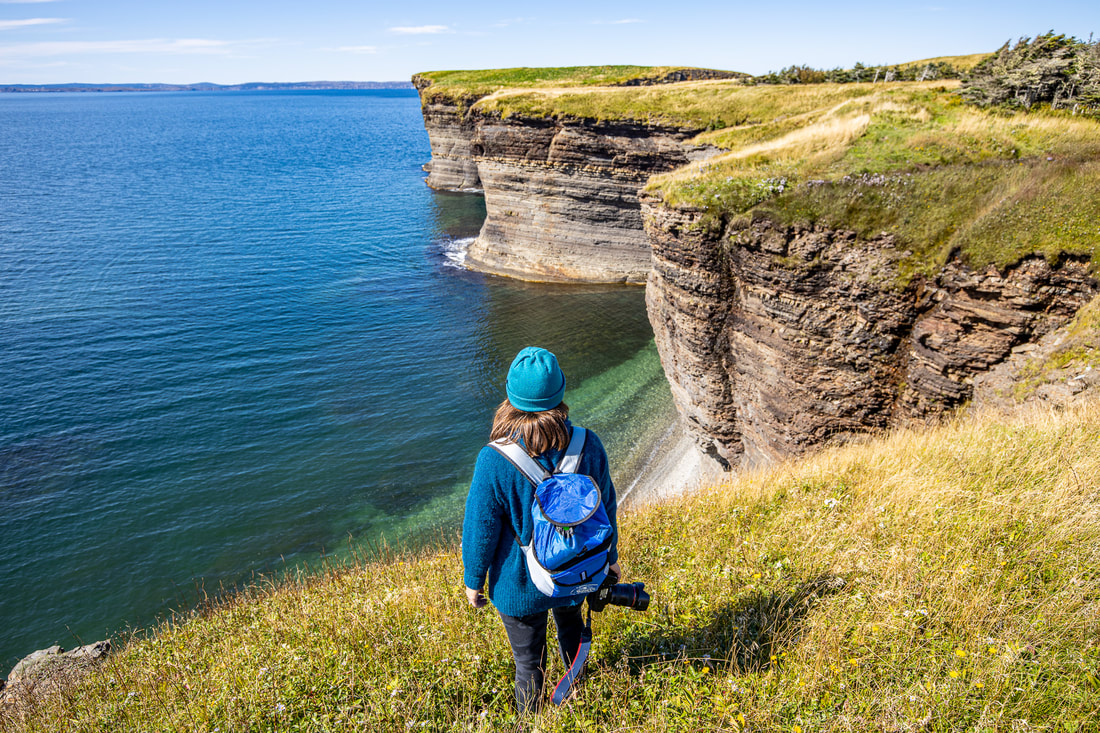
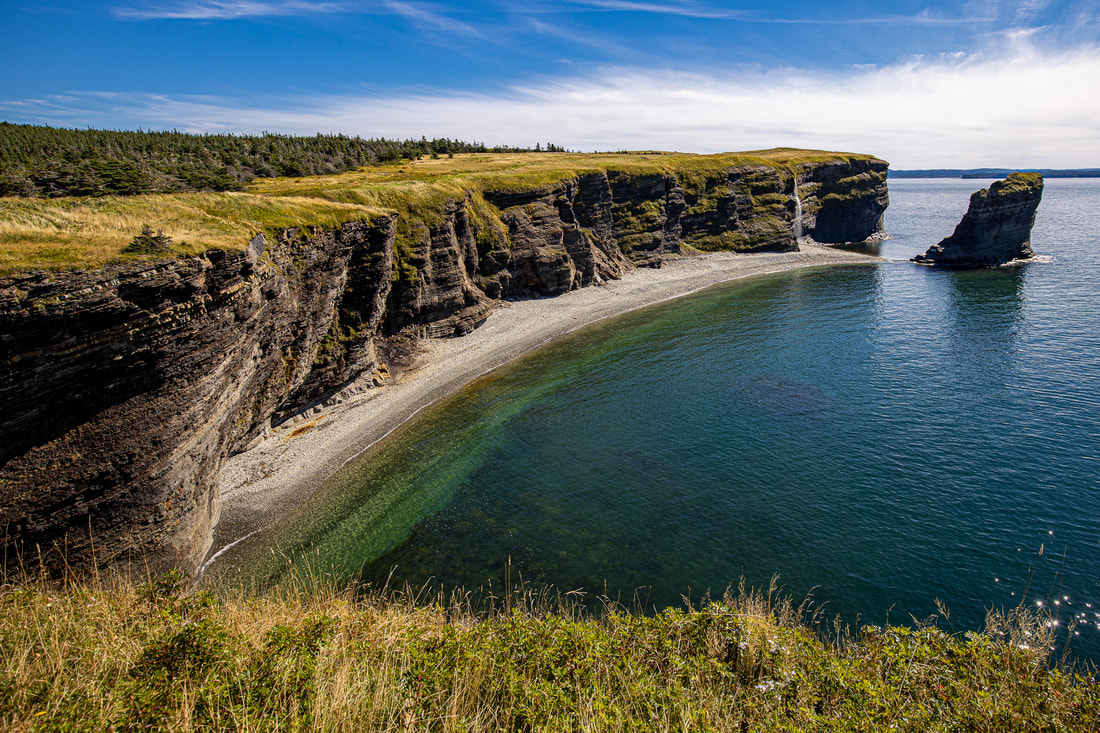
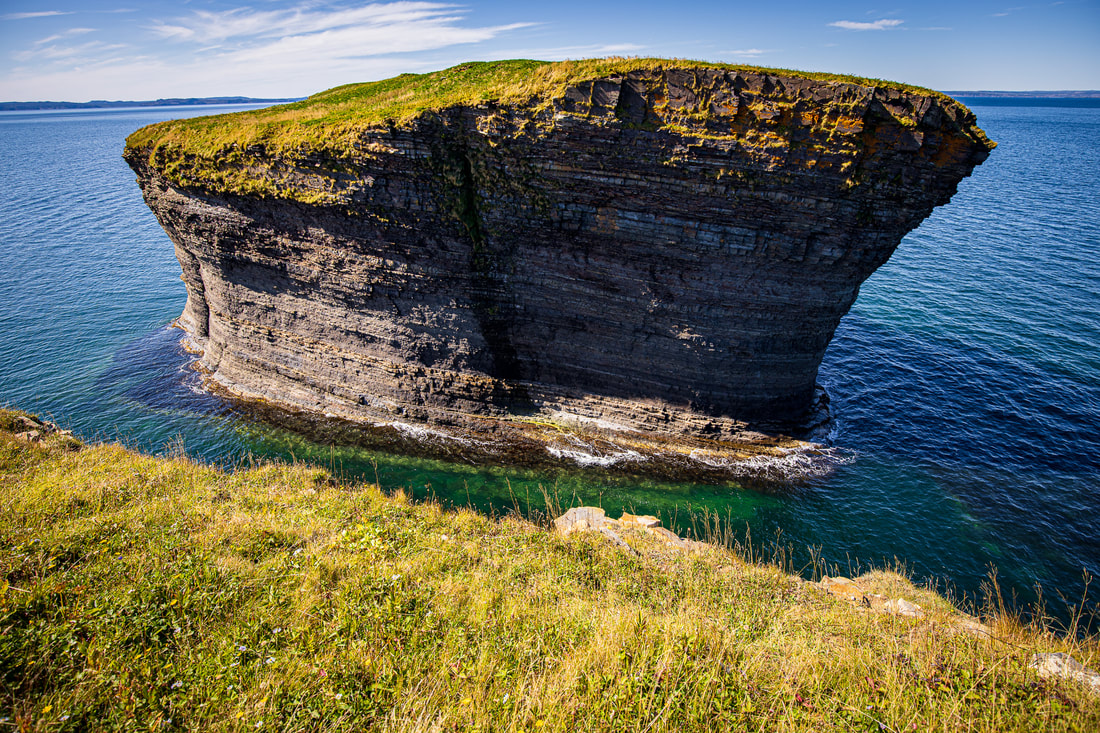
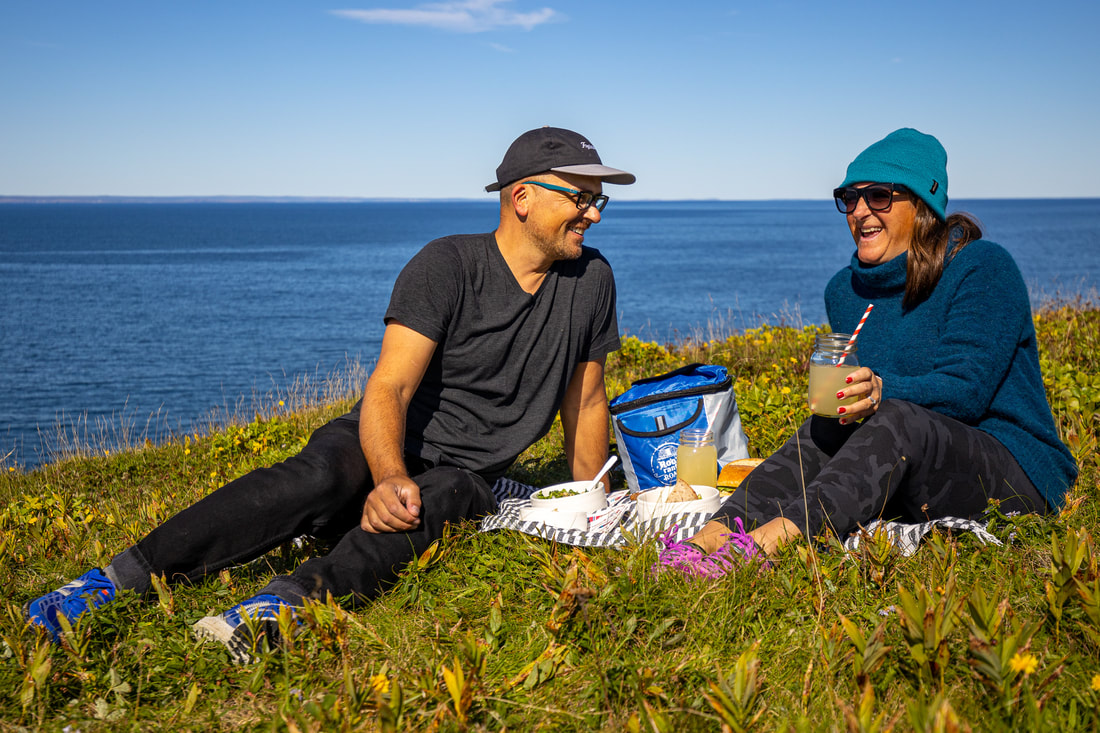
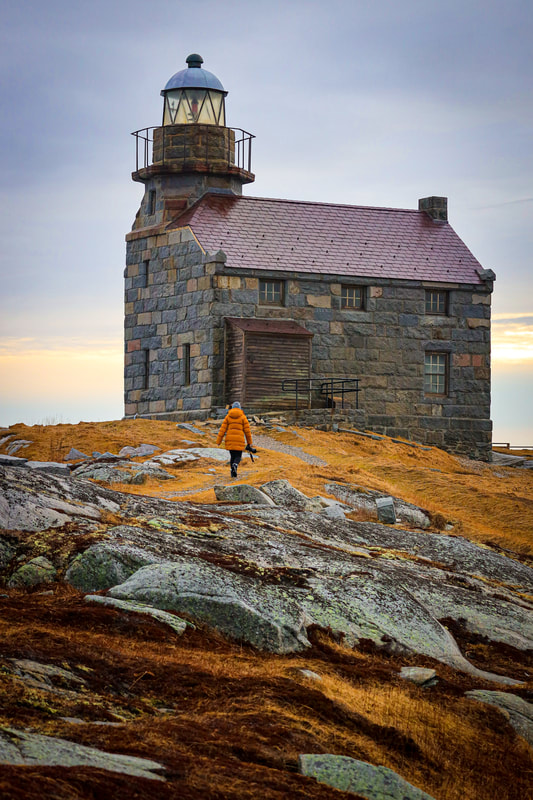
 RSS Feed
RSS Feed